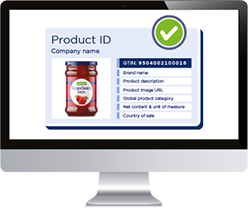Why do you actually need a barcode? Well, it's the way to identify your products. Moreover, that product code, which consists of a Global Trade Item Number (GTIN) and a barcode, is unique and indispensable for traders to offer your product in their (online) store. If you want to sell your products, you need a product code!
Start with GS1 barcodes in 1, 2, 3


2. REGISTER on My GS1
As soon as you have determined how many product codes you will need, you can take out an annual subscription to a code package. Indicate how many codes you need and fill in the necessary company information. We will then provide your unique company prefix that is required for all GS1 codes! Your product codes will always start with this company prefix.
Who is responsible for assigning a barcode?
Barcodes for products that require a unique identification number, such as a Global Trade Item Number (GTIN) or a European Article Number (EAN), can be requested from GS1, the only globally recognised organisation that issues barcodes.
Frequently asked questions about barcodes
Yes, in most cases, a barcode is required if you want to sell your products through retail channels or online platforms. For internal use within your company, barcodes are not mandatory, but they can significantly improve your processes.
A barcode remains valid as long as the product it is associated with, is actively being sold. If the product is discontinued, the barcode remains technically valid but is no longer used.
You need a unique barcode for each:
- Product variant (such as size, flavour, or colour);
- Packaging type (such as a box, pallet, or special promotional offer).
Assigning a new barcode depends on the nature of the change. You will need a new barcode if the product undergoes any of the following modifications:
- New content (e.g., different weight or volume);
- Significantly changed packaging;
- New feature or technology.
Example: A shampoo changes from 500ml to 600ml.


